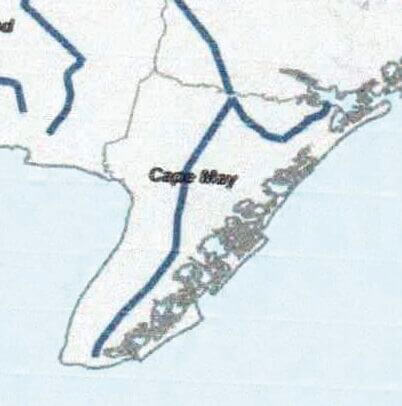Every four years, the federal government requires recipients of federal transportation funds to update long-range plans for how the funds will be distributed and used. We are currently in the process of completing that task.
One document that drives that planning effort is the Regional Transportation Plan (RTA). The RTA, a newly updated 200-page plan covering four South Jersey counties, including Cape May County, carries the title Moving South Jersey Forward (https://bit.ly/30gLevi). It seeks to set a vision for transportation projects, funding and needs to 2050.
The report is in draft form and is available for public comment. You probably have not heard of the report or its predecessor document published in 2016. At the time of the 2016 version of the plan, the one public meeting held, in Cape May County, to gather resident comments was lightly advertised and drew six people.
Regional coordination of the RTA is the responsibility of a federally designated regional planning organization – South Jersey Transportation Planning Organization (SJTPO). Through the SJTPO, Cape May County is part of a four-county South Jersey region, which also encompasses Atlantic, Cumberland, and Salem counties.
The draft document available for comment envisions a future much like the present, but less so. With a 30-year horizon to work with, the document pictures ongoing population loss, the continued aging of the population that remains, and a “distribution of jobs largely the same as it is today.” Rip Van Wrinkle could wake from a three-decade slumber and hardly know he had been asleep.
The four-county region has 5,233 miles of roadway, covering 20% of the entire state land area. Those roadways not only support the permanent population of the region, but a seasonally adjusted population that swells Cape May County by 600%, according to the report.
The report admits that the area, especially Cape May County, is responsible for “vast state revenues” from tourism. Cape May County represents around 1% of the state’s population, but through its $6 billion-plus tourist industry it generates over 9% of the state’s gross domestic product.
The SJTPO report calls this a “funding imbalance,” which it lists as one of the five critical transportation issues for the region. Transportation funding is not in proportion to seasonally adjusted population, state revenues generated, vehicle miles driven, miles of available roadway, or the percentage of persons in poverty. The latter variable is one that is supposed to drive more transit funding than it does.
The report states that the SJTPO can help by working with local elected officials to make them aware of the funding imbalance issues. How could they not be aware already?
A look at the distribution of state transportation fund dollars just this past week shows how Cape May County, with its huge summer population, continues to lose out in the race of financial support.
At the end of July, as required by state law, the state Department of Transportation announced the FY2021 county aid allocation for each of the state’s 21 counties. Cape May County came in dead last in the allocation.
The county was awarded $3.4 million out of a total of $161 million. Even Salem County, with its significantly smaller population, received 45% more in funding.
The reason for the imbalance this time is that the county aid funds are formula driven by population and miles of county managed roads. In that specific category, Cape May County has the least road miles under county control, just one more way in which a county that has hundreds of thousands of summer visitors and second home owners gets the short end of the funding based on formulas insensitive to our unique character.
Let the taxpayers pay for it is the all too frequent bottom line.
The facts made clear in the SJTPO plan are that this four-county region gets a very small slice of the transportation funding, a slice even smaller than the region’s admittedly low population might warrant. Further consideration of the plan shows Cape May County’s portion of that small slice is smaller yet.
At one point, the plan states that the very factors that help the county generate disproportionately large funds for the state turn into reasons why projects can’t be funded. Proximity to water and wetlands and the abundance of environmentally sensitive areas, along with similar characteristics of shore communities, “add to the cost and complexity” of transportation projects, exceeding the cost of more traditional inland projects.
The draft plan is available and interested members of the public should take the opportunity to be heard on its proposed projects and priorities, but the likelihood that public comment would result in a significant change on an already prepared 200-page plan in the closing months before it must be submitted to federal agencies is minimal.
The report is not significantly different than the version of the report completed in 2016 or from the version four years earlier. The funding is going north.
*****
The Cape Issues team was established in 2008, as a non-partisan volunteer group, to advocate for the betterment of life in Cape May County, a very broad goal. They have met monthly since and been fortunate to have the support of the Cape May County Herald from the beginning.







